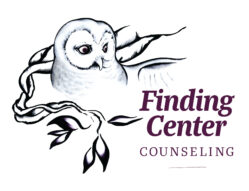In a recent conversation with a momma I support, the theory of attachment came up. Suddenly tears came to her eyes and she began to speak about her youngest. She shared some of the ways her child shows up in the world, some of the challenges that have been part of their shared journey since infancy, and asked if it was because her child’s attachment. I could see the anticipated guilt in her eyes and body language.
Attachment is a big topic these days, and for good reason. There is an outpouring of well-written research on the subject. Research primarily focused on how a child’s attachment impacts them, as well as how understanding our own attachment can help us interact with others more effectively. Google the word attachment and a slew of book titles comes up – Attached: Raising A Secure Child, Parenting From The Inside Out: How a Deeper Self-Understanding Can Help You Raise Children Who Thrive, The New Science of Adult Attachment and How It Can Help You Find And Keep Love, Attachments: Why You Love, Feel and Act the Way You Do…the list goes on and on.
While many of these books are fantastic resources – full disclosure, some of them sit on my office bookshelf – they can also be red-hot triggers for guilt. Especially parent guilt.
Every parent knows that there are ways we shape and influence our children (intentionally or otherwise) and there are other traits are children are born with – that are just who they are. Our children come into the world their own unique selves. We get the honor and the privilege of supporting them, raising them, shaping them to some extent. We also mess up, frequently and unintentionally.
In this case of this mother, she so clearly sees these patterns that they struggle with were present from the first days of infancy. This is not attachment. This is temperament.
I’d like to offer you some definitions:
Attachment – the emotional bond that typically forms between an infant and their primary caregiver, related to getting their basic needs met and intimately linked to the creation of neural patterns of response that persist throughout life
Attachment is created in the bond between child and caregiver. Even those of us who are actively seeking support and doing our own work to be the best parents we can will have challenges with our children. Attachment research shows that a secure attachment can be successfully achieved by the “good enough” parent. A parent that meets a child’s needs most of the time, who messes up and then intentionally reconnects with our child (creating an emotional repair), is a “good enough” parent.
Temperament – the inherent way, present at birth and beyond, in which a child reacts to the world around them, including new situations, people and experiences
Temperament is how our children come into the world. We can, perhaps, gently shape our children’s temperament. But we cannot significantly alter it. Example – a child is innately introverted and shy. We can support this child in safely connecting with others, creating space to practice speaking their needs, and learning how to self-advocate for themselves. They will still be introverted – they will simply be an introvert with tools to engage in the world in spaces that feel challenging.
It is so easy as a parent to feel responsible for our children’s needs and ways of being in the world. And we do have a big impact on our children. There is a lot we can learn about attachment that can help us be better parents and create children who thrive. Perhaps the Serenity Prayer is the best way to sum up this brief foray into attachment and temperament:
Grant me the Serenity to accept the things I cannot change,
The Courage to change the things I can,
And the Wisdom to know the difference.
Photo credit @elsacophoto

